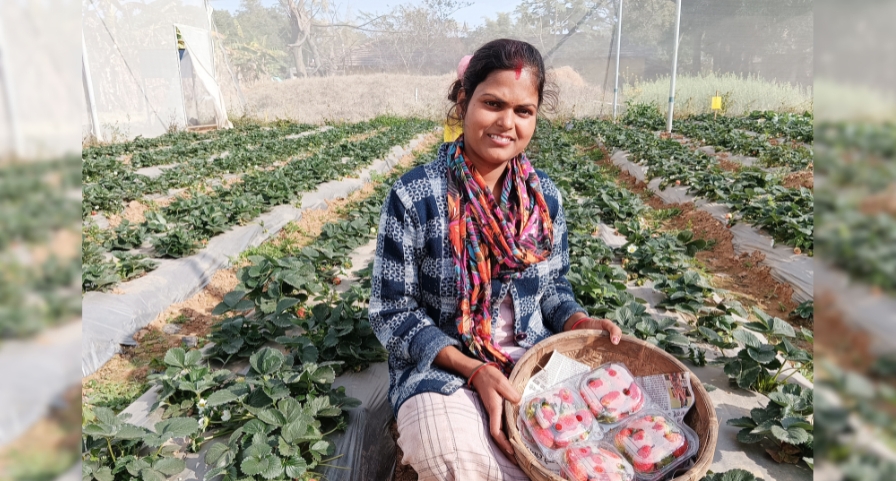Sumitra, a 26-year-old who has done post-graduation
in demographics and hailing from Berhampur, a small town in Odisha, moved to Shegaon
in Maharashtra after marriage. When she moved from the eastern to the western
part of India, the cultural shift was obvious in the rituals being followed.
The day after the wedding, the marital
family arranged for Satyanarayan Puja. During the puja priests bless the
newlywed couple, and everyone prays for a baby at the earliest. After the puja,
women from the neighborhood gather to perform fertility rites, offering gifts
to the newly married woman.
The baby shower of the present day
is nothing but the modernized version of godh bharai, which means ‘filling
up the lap with abundance’. It is usually practiced in the seventh month
of pregnancy, where women offer gifts, jewelry, fruits, rice, etc. in the
pregnant woman’s lap.
Then the women whisper into the
expectant mother’s ears, wishing her to have a baby boy or girl according to
their preference. Commonly known as shaad in West Bengal, seemandham
in Kerela, valaikappu in Tamil Nadu and godh bharai in most of
the northern states, every region in India has this custom.
The ceremony is for blessing the
mother for a safe delivery, and good health for the mother and child. Though
such cultural practices seem subtle, it may have deeper impressions on
childbearing and the mother’s psyche, besides being a precursor for the inferior
status of women at a later stage.
Fertility rites
In the fertility rite such as the
one Sumitra experienced, seven women offer one fruit each with a fistful of
rice and only a few sesame seeds into the bride’s lap. The most preferred
fruits are coconut, sweet lime, chiku and banana, since they are considered
superior and symbolize the birth of a boy child.
The least favorite fruits are apple,
litchi and orange, representing the girl child. Women whose firstborn is a boy
get the first chance to offer the fruit to the newly married woman. The women
with firstborn male child are considered superior. All the other women pay
respect to the superior women by touching their feet.
After the ritual of offering fruits with
rice and sesame is over, the women ask the bride to empty her saree into a
plate slowly. Then they check the folds of her saree to see what remains, whether
the rice grains or the sesame seeds. The belief is that she would have a boy if
more rice remains in the saree.
Preference for
boys
After Sumitra went through this
ritual, her sister-in-law murmured in her ears, “This shouldn’t have happened, you have more sesame seeds than rice
grains in your saree folds; ask God for forgiveness and pray to bless you only with
a boy child.”
When the women saw that there were more sesame seeds, the cheers turned to whispers of dissatisfaction. Sumitra understood that she had failed the test. After this, she observed a drastic change in the women’s attitude towards her.
Customs and sex
ratio
These age-old fertility rites raise
several questions on their significance. Does society need such practices? Or
are they merely continued in the name of tradition. These cultural practices
may be vestigial, but their social importance and results show a great deal in
the position and status of women in the family.
Directly or indirectly, it may be
interlinked to the poor sex ratio and child sex ratio (CSR) in India. Sex
ratio, defined as the number of females per 1,000 males and CSR defined as the sex
ratio of children below seven years of age, show depressing statistics.
According to Census 2011, India’s sex
ratio is 943 females per 1,000 males whereas the CSR is lower, at 914 girls per
1,000 boys. What could probably be the reason behind such a difference? Are
Indian women giving birth to fewer girls or the availability of advanced
medical techniques for detection, plus additional methods to abort the unwanted
fetuses play a significant role?
Societal pressure
But who is responsible for the
inferior status of women as well as the disturbing sex ratio and child sex
ratio? Is it the society that silently promotes the practice or the women who
otherwise demand equality and empowerment but succumb to society’s pressure
within the closed walls of their home.
Or blame the Sumitras, educated women,
for not opposing and indirectly allowing such practices to flourish and
allowing the same to be passed onto the next generation in the name of
tradition.
In our
society, every Sumitra has to earn respect by giving birth to a baby boy.
Otherwise, she is the only one to be blamed, even though the male’s
contribution of chromosomes are originally responsible for determining the sex
of the child.
Women’s inferior status
Usually
a woman who has a son receives more respect than one who has a daughter, from
the family as well as the society on all occasions in many parts of the
country. While giving birth to a son is considered the key to dignity and
respect for a lifetime, giving birth to a girl gives the woman an inferior
status, which later reflects in the upbringing of the girl as well.
For
a girl who is not wanted even before her birth, whose possibility of coming
into existence spreads sadness among relatives as seen in Sumitra’s case, it is
natural that she grows up to face discrimination in all walks of life.
Sumitra’s
story reveals that there could be several such traditions still in
practice, regardless of religion, caste and language. With people practicing
such traditions unaware of the consequences, probably everyone shares the
responsibility for such skewed sex ratio and inferior status of women.
Sumana Acharya
is a researcher at VikasAnvesh Foundation, Pune. Views are personal.



